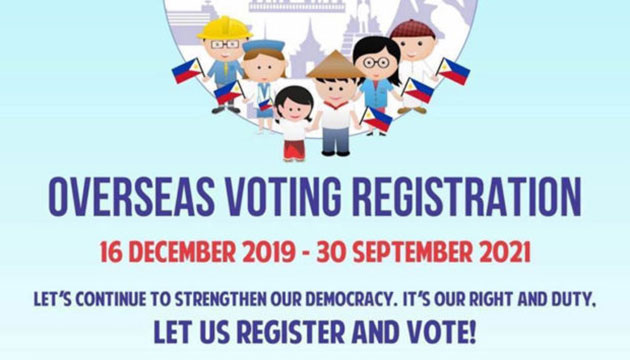(This is Part 37 of Dr. Pagtakhan’s column Medisina at Politika in Pilipino Express.)
Editor’s Note: In February 2020, CFNet started publishing Dr. Rey Pagtakhan’s Commentary on COVID-19. Now on Part 37 of his running commentary, Dr. Pagtakhan – a retired lung specialist and former Member of Parliament – has kept the Filipino community and other CFNet readers continually informed about 1) the pandemic and its impact, 2) the scientific advances on drugs and vaccines, 3) the effectiveness of public health measures, including mass vaccination, 4) the danger of misinformation and disinformation, and 5) sound public health policy.
“It would be any parent's worst nightmare during this pandemic: a child contracting COVID-19, falling seriously ill and dying.”
Thus opened the CBC News posting a little over half-a-year ago (Lauren Pelley·CBCNews·April 29, 2021). The posting detailed the occurrences of children getting seriously sick and dying from the disease as experienced by families in several provinces, including in British Columbia where the “youngest death yet from the illness: a baby who died from COVID-19 while being treated at the children's hospital” was reported.
As a parent and as a physician who spent my entire postgraduate training and practice in pediatrics and child health, I at once identified with the posted grim message. The times were ominous: full vaccination of adults still low, community immunity still being built, and COVID vaccine has not been authorized for children. While Health Canada’sinitial authorization on December 9, 2020 of the first COVIDvaccine – the Pfizer-BioNTech vaccine – for adults included teenagers as young as 16, expanded authorization given five months later on May 5, 2021 included only adolescents 12 to 15 years of age. Those younger than 12 remain non-eligible for the disease-and-life-saving vaccine.
“Half-a-year later earlier this month, the STAT + Newsletter posted its health breaking news that the U.S. “CDC (Centers for Disease Control and Prevention) advisers endorse Pfizer’s COVID-19 vaccine for kids 5 to 11.” (Helen Branswell with contribution from Andrew Joseph. STAT + Newsletter. November 2, 2021).
A momentous day – a huge welcome
The “momentous day” – as US-CDC Director Rochelle Walensky calls the further expansion of authorization for the COVID-19 vaccine to include elementary school kids aged 5 to 11 – took place barely two weeks ago on October 29 followed by full federal regulatory approval on November 2nd. Immediate roll-out occurred a day later
“I value preventing infection in children and I think it could have a huge positive impact on their health, their social and emotional wellbeing, their educational outcomes and their long-term trajectory… and vaccines are really the only consistent and reliable way that we can provide that protection,” quoting Grace Lee, a professor of pediatrics at Stanford University School of Medicine and chair of the American Advisory Committee on Immunization Practices. She also echoes the voice of the consumer representativeVeronica McNally on the Advisory Committee.
American Academy of Pediatrics President Lee Savio Beers has applauded the authorization in a statement: “Pediatricians are eager to participate in the immunization process and talk with families about this vaccine…to ensure that access to this vaccine is equitable and that every child is able to benefit.”
Canada’s Chief Public Health Officer Dr. Theresa Tam recently briefed the press that "children under 12 continue to have the highest incidence rates across all age groups." Moreover, that more than five million eligible Canadians and more than four million non-eligible children under 12 have not been vaccinated. These figures indicate a higher risk of surges of cases and underscore the importance to Canada of the forthcoming new pediatric vaccine.
The new pediatric vaccine is almost here
Canada is now on the verge of having this new pediatric vaccine. Health Canada, which received the application from Pfizer a couple of weeks later after its submission to the US regulatory body, is now reviewing both the clinical trial data and the new product formulation. It anticipates making its announcement anytime soon. Naturally, Canadians are expecting a similar greenlight.
The new Pfizer vaccine for this much younger group of children is the first pediatric vaccine. It is one-third the adult dose (10 micrograms of the antigen) and is given in two doses 21 days apart just like for older children and adults. The formulation is different, but otherwise the same vaccine in efficacy, safety, and quality. The side effects are the same as seen in adults and the benefits far outweigh the risks.
Does this age group need the vaccine? Yes
The recently reported landmark 9-month-long study undertaken by the Canadian Paediatric Surveillance Program of all 264 pediatric cases of COVID-19 in hospitals and ICUs during the period March 25 to December 31, 2020 validates earlier observations that “children and youth fared better than adults and were at less risk of severe disease or death.” (Olivier Drouin, Charlotte Moore Hepburn, et al. Canadian Medical Association Journal. September 27, 2021). This type of observation could, understandably, influence some parents to vaccine hesitancy for their children.
Thus, I should emphasize the point that even though young children have not been as seriously affected by the COVID virus, they have not wholly escaped its onslaught. Reports of COVID deaths in this age group show rates that exceed deaths from influenza. Also, young children can develop “long COVID”, that is, persistent distressing symptoms after recovery from their acute infection. And they can develop the multisystem inflammatory syndrome, nearly half of whom among the 5 to 11 age group and few died. Experts have opined such tragic statistics could increase, considering the social environment these children could find themselves in.
The Surveillance study also validates earlier observation that children with COVID-19, “with and without underlying conditions can be hospitalized or admitted to ICUs.”It further noted that vigilance about potential changes in the characteristics of COVID infection in children is needed as the pandemic continues to evolve and assumes importance for plans related to future COVID-19 immunization and prioritization in the pediatric age group.
This brings me to the alarm bells at press time (November 13). Toronto Star just reported: “Two new Delta offshoots have emerged in Western Canada. It’s a warning, say disease experts.” It carries a significant message for the rest of the country “on the consequences of allowing a virus to spread unchecked.” While it is still unclear whether the new Delta mutations evolved in Canada or were imported via international travel, it highlights that “evolution is happening right here in Canada, and every new infection is an opportunity for the virus to evolve,” Dr. Jeffrey Joy, an assistant professor at the University of British Columbia’s faculty of medicine and an expert in genomic epidemiology, is quoted saying.
But the observations appropriately ring the alarm bells and help the call to expand, in pace and scope, our mass immunization program with the anticipated new pediatric vaccine.
For all these reasons, kids from 5 to 11 years of age do need the vaccine. A child’s life lost from a preventable tragedy cannot be allowed. In addition to protecting them, vaccinated children help decrease the further spread of the virus, including to family members, and help in the attainment of community immunity. Eventually, vaccination among children would help control the pandemic and its damage to individuals, community and country.
What should we tell the kids and their parents about the new vaccine
We should emphasize that the vaccine has been tested in kids and shown to be effective and safe, and will protect them from getting sick. It offers more definitive protection than a natural infection; the side effects seen are tolerable and temporary; the benefits gained far outweigh the risks; can be given in the arms or thighs whichever works best; the syringes are smaller, but a pinch will still be felt from the needle. Doses, like in adults, are given twice three weeks apart, but the amount of the antigen is only one-third than in the adult vaccine.
We should further share the layers of protection offered by vaccination of children, including this age group included. It would prevent: 1) infection following exposure, that is, the COVID virus fails to gain a foothold in the vaccinee; 2) moderate disease, that is, a breakthrough infection can occur but clinical manifestations of the disease are absent (asymptomatic) or mild and illness would not require hospitalization; and 3) serious disease and death, that is, the necessity for ICU admission and the likelihood of dying when hospitalized are significantly less in frequency compared to the unvaccinated.
Finally, we should share the information that immunizing this age group will immensely lessen the public health burden caused by the pandemic. That infected children – even those without symptoms - are capable of spreading it to both peers and adults in their households and in the community (schools and daycare centers), thereby, increasing the opportunity for continuing community circulation of the virus and consequent emergence of potentially even more deadly variants than the Delta.
You may read national Geographic KIDS and FAMILY Editor in ChiefRachel Buchholz’ three pieces of advice: 1) talk to your kids about what will happen; 2) give them a sense of control, which will help them relax; and 3) don’t lie. Telling a kid you’re going out for cupcakes only to wind up at the doctor’s office never works.
Vaccine hesitancy: a crisis of public trust, not a war against science
The history of immunization is a story of medical success. Of the six childhood communicable diseases that used to be seen commonly in clinical practice – whooping cough, measles, rubella (also called German measles), mumps, diphtheria and polio – the latter has been eradicated, whooping cough has been decreased by 87%, and the others decreased by 99%. Indeed, vaccines work.
Thankfully, the vast majority of Canadian parents – close to 70% according to a recent survey by Forum Research of parents of children aged 5 to 11 - would have their children promptly vaccinated for all the right reasons: to protect them from sickness; to prevent them from infecting others and missing in-person schooling, extracurricular activities and public places; and to help control the pandemic.
Unfortunately, vaccine hesitancy to COVID-19 vaccines remains a challenge notwithstanding their effectiveness and safety. The same research survey shows 10% would not and another 20% would wait, citing worrisome side effects, difficulty of access, hasty vaccine development, conflicting public health messages, curtailment of freedom, misinformation and other conspiracy theory allegations.
Maya J. Goldenberg, an associate professor of philosophy in the Department of Philosophy at the University of Guelph whose research work focuses on the philosophy of science and medicine and the connection between science and values, offers one insight that “ultimately reframes vaccine hesitancy as a crisis of public trust rather than a war on science, arguing that having good scientific support of vaccine efficacy and safety is not enough…(and) advocating for trust-building measures that focus on relationships, transparency, and justice.”
True, access must be facilitated. But establishing trust appears to be the common denominator required. To help achieve this, some public-health campaigns involve getting children and their parents excited about getting the vaccine shot. For example, Toronto Mayor John Tory and Medical Officer of Health Dr. Eileen de Villa announced “Team Toronto Kids” which features kid-friendly materials.
What is Canada’s childhood vaccine strategy?
“Vaccines for children are almost here. Does Canada have a plan?” reads the Globe and Mail editorial of October 6, in anticipation of the forthcoming new pediatric vaccine that received, three weeks later, the green light from the US regulatory agencies. It expresses its observation and lament that Canada’s roll-out of its mass adult vaccination program left much to be desired, admittedly not wholly within Canada’s full control. It underscores, this time, Canada’s “golden opportunity to quickly and dramatically shrink our pool of unvaccinated people” – the roughly three million children in the age group who will become vaccine-eligible – and thereby “increase the safety of all children and adults, while lowering the odds of further pandemic shutdowns of schools and businesses.”
The necessity for a Canadian operational plan to roll-out the new pediatric vaccine for children aged 5 to 11 is obvious. Any successful childhood vaccine strategy needs not just regulatory approval but a hefty supply of vaccines and their efficient distribution nationwide – the federal responsibility – and the wherewithal to deliver them into arms and thighs of children on time and in quantity – the provincial and territorial obligation.
The operational scenery at this time looks reassuring. Prime Minister Justin Trudeau has pledged that there would sufficient supply for the first dose to all newly eligible kids. Most provinces have posted and described their plans.
Summation
Canada is on the verge of authorizing for use of the disease-and-life-saving COVID-19 vaccine for children aged 5 to 11 – the new pediatric Pfizer-BioNTech vaccine. A health breaking news, indeed!
The US gave this pediatric vaccine its full regulatory green light earlier this month and promptly started its roll-out the following day. Already, more than 50,000 children in the New York state alone have received at least one dose since the green light was issued barely three weeks ago.
Compared to the previously approved Pfizer vaccine that has now been given to fully immunize hundreds of million people 12 years and older worldwide – Canada included – the newly formulated pediatric vaccine comes on smaller vials, can be stored longer in the fridge, is deliverable in small syringes, can be injected into arms or thighs, contains one-third of the mRNA antigen (10 micrograms), and is as safe and effective.
Reportedly, Health Canada is just about ready to favorably announce its medical imprimatur after its own comprehensive and independent review of the clinical trial data and the quality of the new pediatric formulation. It is almost here and may well partially protect thousands of Canadian children before Christmas. As an example, Ottawa Public Health claimed it could vaccinate all kids ages 5 to 11 years old (about 70,000) within the first month of their eligibility (Nicole Williams · CBC News · Nov 02, 2021).
A child’s life lost from a preventable tragedy cannot be allowed. Thus, Canadian public health officials, health care practitioners, parents and guardians, kids and governments at all levels waiting for the new pediatric vaccine with great anticipation. No more parental nightmare.














